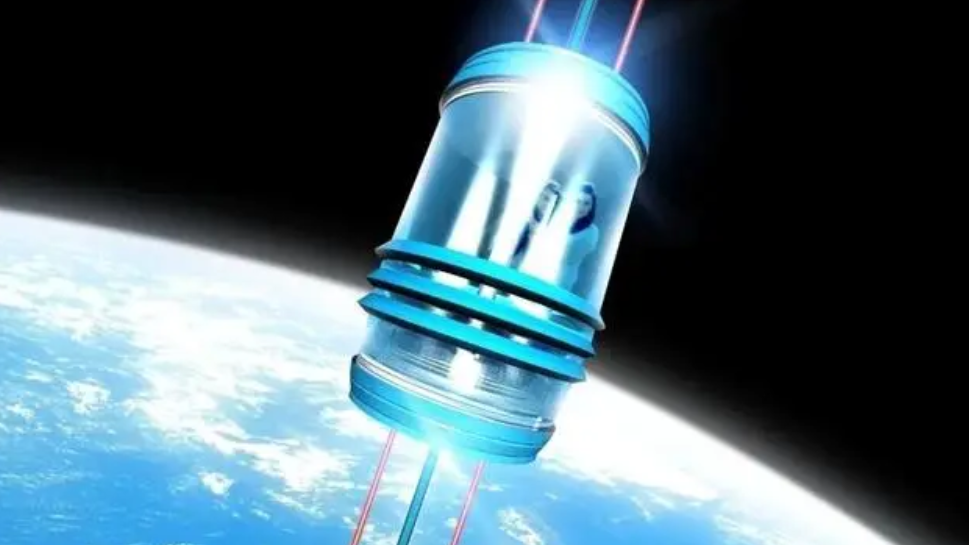
Enter the elevator, press the up button and you will be in space, isn't it cool? At the 2022 International Symposium on the Peaceful Use of Space Technology (Health) held from November 18 to 20, Peter Swan, chairman of the International Space Elevator Alliance and academician of the International Academy of Astronautics, proposed that the future space elevator, as a permanent logistics infrastructure, can Transporting materials and personnel into space has become a new channel to enter space.
With a space elevator, it may take only 61 days to go to Mars
The principle of building a space elevator is not complicated. Long cables hang between the sky and the earth, anchored at one end to the ocean at the Earth's equator, and "catch" a counterweight (like a satellite or a space station) in geosynchronous orbit at the other end. Along the cables, a machine (the car of the space elevator) moves up and down.
Swan said: "According to the current design, the space elevator car weighs about 20 tons, and the climbing speed is about 200 kilometers per hour. In the future, with the lengthening of the cable and the acceleration of the car's climbing speed, it is expected to reach the geosynchronous orbit in 8 days." , 14 days to reach the moon, 61 days to reach Mars."
"Compared with rocket transportation, space elevators are more environmentally friendly, cost less, and have a higher reuse rate, so they are also called 'green sky roads'." Swan explained that space elevators are powered by solar energy and are not as expensive as launching rockets. Lots of chemical fuels.
And the chances of a space elevator creating space debris are slim to none. Scientists have found that as of January 2020, there are 29,000 pieces of space debris larger than 10 centimeters, and more than 170 million pieces of debris larger than 1 millimeter. These debris seriously pollute the space environment.
"In addition, using a space elevator to transport materials costs about 500 US dollars per kilogram, which is cheaper than using rockets." Jean-Michel Quentin, secretary-general of the International Academy of Astronautics, said.
Swan believes that in the future, humans will need to launch a large amount of materials into space to build Mars villages and moon villages. Interstellar travel is also highly anticipated, and space elevators are very commercially competitive.
But the rocket launch will not be abandoned for that. Dennis Wright, vice president of the International Space Elevator Alliance, said that rockets are faster than space elevators and can quickly traverse the radiation belt. Therefore, some people have proposed to use the "space elevator + rocket" method of transportation to achieve complementarity. "If you think of a space elevator as a cargo ship, then a rocket is a cargo plane."
The design is feasible, but the practice still faces challenges
The dream of a space elevator has been around for a long time. In 1895, Russian scientist Konstantin Tsiolkovsky proposed the idea of a space elevator after seeing the Eiffel Tower. Science fiction guru Arthur Clarke also depicted a space elevator in his novel "Heavenly Springs." But due to technical hurdles, the space elevator has remained in the conceptual stage for a long time.
With the continuous development of aerospace technology, there are more possibilities to build space elevators. According to Swan and Wright, in terms of materials, carbon nanotubes and super-strength graphene are considered to be ideal materials for building space elevator cables; in terms of design, scientists have proposed 8 relatively robust and reasonable scientific design schemes; In terms of engineering, scientists in some countries have carried out some small experiments and are preparing for in-depth verification.
"Of course, there are still many challenges at the theoretical, technical and engineering levels. Such as dynamics and control methods, research and development of new materials, equipment design and construction, etc." said Shi Gefei, an associate professor at the School of Aeronautics and Astronautics, Sun Yat-sen University.
Many detailed questions remain to be answered by scientists and engineers: What drive mode should the space elevator car choose? How to overcome the influence of gravity? How can the cable withstand the bombardment of high-energy cosmic rays and effectively resist swinging? What to do if the elevator encounters space debris and meteorite impact...
Wright said that scientists estimate that the space elevator will be initially put into operation around 2035, and the use of space elevators for people needs further verification to ensure its safety and feasibility. It may be around 2045, and there is no exact timetable yet. Faced with this time-consuming, labor-intensive and expensive project, Swan called for strengthening the research and cooperation of space elevators.
(Original title "Take the elevator to Mars? This dream is not far away")




Comments